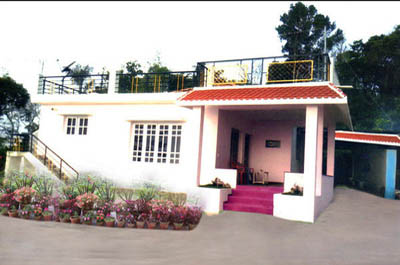Kukkarahalli Lake |
Kukkarahalli Lake also called Kukkarhalli Kere (Lake is ‘’kere’’ in local Kannada language), located in the heart of the Mysore city, adjoins the Manasgangotri (University of Mysore),[1] the Kalamandir (Rangyana) and the Central Food Technological Research Institute (CFTRI) campus (separated by the Hunsur Road). It provides lung-space to the city. Mummadi Krishnaraja Wodeyar, (1794–1868) of the Mysore Dynasty (Kingdom of Mysore) was responsible for getting the lake created, in the year 1864, to provide water for irrigation to about 4000 ha (10,000 acres) of land outside the city.[2] The Lake also used to be a source of water supply to the city of Mysore but over the years, sewage and excessive land encroachments (mostly illegal) and blockage of water flow sources almost led to the eutrophication of the lake. The University of Mysore and the citizen forums of Mysore continue to make efforts to preserve the lake by implementing several remedial measures. [3][4] There is a 4.5 km walkway on the periphery of the lake with shaded stone benches for visitors to sit, relax and enjoy the scenic serenity of the lake.
|
GRS Fantasy Park |
GRS Fantasy Park is a theme based amusement park and one of the favourites among the locals of Mysore. It offers some really amusing rides and activities making it a perfect spot for friends and families to hang out.
Located just 15 minutes drive from Mysore; GRS Fantasy Park is an amusement cum Water Park that serves perfectly as a picnic spot for everyone. Set amid a lush green environment on the Mysore-Bangalore highway, it has been a part of several memorable holidays and unforgettable memories for the past 13 years. It offers numerous thrilling fun rides and multipurpose play system for kids and adults. Water games and kid's pool are the main attraction of the park. There are many inbuilt games at Amazonia which is an interactive river. In short, the experience and the ambience at GRS Fantasy Park are simply exhilarating. |
Kabini Dam |
The Kabani, also called Kabini or Kapila, is a river in southern India. It originates in the Wayanad District of Kerala state by the confluence of the Panamaram River and the Mananthavady River. It flows eastward to join the Kaveri River at Tirumakudalu Narasipura in Karnataka. The Kaveri river then irrigates Tamil Nadu and it is major drinking water source before emptying into the Bay of Bengal near kaveripoompattinam. Close to the town of Sargur it forms the huge Kabani Reservoir. The backwaters of the Kabani reservoir are very rich in wildlife especially in summer when the water level recedes to form rich grassy meadows. The Kabani dam is 2,284 ft (696 m) in length with an original gross storage of 19.52 tmcft, but that has been reduced considerably due to silt accumulation. The Kabani Dam is situated between villages Bichanahalli and Bidarahalli having distance of 17 km (11 mi) 6 km away from Sargur town in Heggadadevana kote taluk, Mysore district.
|
Regional Museum |
The Regional Museum of Natural History at Mysore, was inaugurated on 20 May 1995. It was undertaken by the government of India, ministry of environment and forests. The museum is located on the banks of Karanji Lake, with the Chamundi Hills visible in the background. It is now a landmark in the city. The museum exhibits plants, animals and geology of the southern region of India. The galleries emphasize the conservation of nature and natural resources while depicting ecological interrelationship among plants and animals. Visually challenged students can feel the exhibits of animals on the premises. The museum provides an extracurricular activity for schools and promotes environmental awareness.
|
Lingambudhi Lake |
Lingambudhi Lake is a lake in the city of Mysore, India. Mysore city has three healthy and surviving water bodies-Kukkarahalli, Karanji & Lingambudhi, supporting moderate bio-diversity. Among them, Lingambudhi stands first in terms of richness entirely due to its location bordering growing city. Lingambudhi lake is a perennial freshwater lake situated in the basin of River Cauvery. Since its construction in 1828 until the late 1980s, Lingambudhi lake was a typical village lake in the rural surroundings of the city of Mysore.Now this lake is close to a residential area called Srirampura. The lake was serving as a source of drinking water, irrigation, and fish produce; as a site for washing clothes and cattle; and as a place of religious worship for the people of Lingambudhi Palya, a village in the vicinity of the lake. A notification from the DCs office dated 28 August 2003, in response to the Forest Department’s proposal of 2001, had finally declared the Lingambudhi lake and its environs as a protected forest area and had transferred the ownership to the Forest Department. This was one of the significant milestones in the history of Lingambudhi lake which now enjoys the status of a protected forest. (Manjunath Sadashiva, 2007)
|





